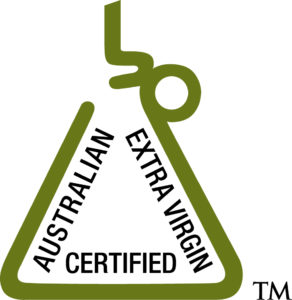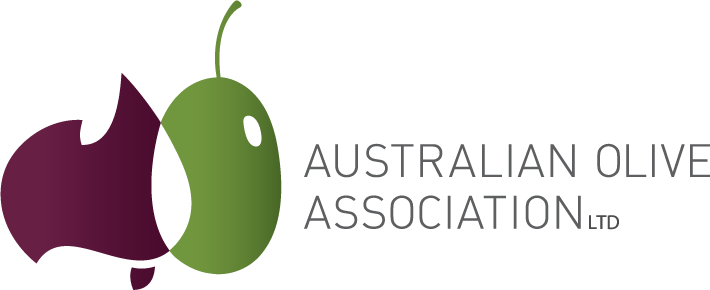Australia’s commitment to EVOO quality a force for international change

By Laura Thomas
Australian olive oil testing and quality standards are levelling the playing field and changing trade across the world.
The nation may be a small contributor to global olive oil supply, but its commitment to quality has become a considerable force for change.
This is an unlikely but uniquely Australian story more than 20 years in the making, propelled by one man’s passion for the olive industry and his determination to see the job through.
Paul Miller is an Australian olive industry advocate and long-serving board member and former president of the Australian Olive Association (AOA) – he is also self-admittedly “obsessed” with changing global olive oil standards for the better.
“Our understanding (of olive oil quality) is as good as anybody’s but better than most and we’ve been leading this strategy globally,” he said.
“This is a story which highlights the competitive position our commitment to quality has put the Australian olive oil market in.
“Quality ultimately wins.”
Mr Miller first stumbled upon testing technology during a visit to Germany more than two decades ago. And after bringing it home for further development, it is now readily available for use by olive producers.
This work has systematically lifted the quality of oil and bottom lines of businesses across the country.
Armed with accurate information about the quality and shelf life of their oil, producers can better manage sales planning, storage and delivery of a higher quality product – leading to a more consistent product and returns.
“It’s immensely powerful technology – you can’t always judge it by taste, especially when the oil has just been made,” Mr Miller said.
“We think all producers should take advantage of this technology … it’s extremely valuable.“
But promoting the idea on home-soil was just the beginning. Mr Miller soon began pushing the concept internationally, with a focus on one of the most strategically important olive oil markets in the world – the US.
According to the American Olive Oil Producers Association, the nation is home to 40,000 acres of commercial olive groves and some of its biggest brands have embraced Australia’s testing technology and commitment to quality.
An olive oil standard and regulation closely mirroring the Australian Standard for Olive Oils and Olive Pomace Oils has also been established in the state of California, with plans underway for nation-wide roll-out. The US industry has also secured significant funding to further characterise and define its olive oils as we do in Australia.
But US-produced olive oil satisfies just 5% of domestic consumption and the nation relies heavily on imports to fill the void.
Currently, most of this oil is imported from Mediterranean countries such as Spain and Italy, where the thousands-year old industry is steeped in tradition and entrenched methodologies.
Mr Miller said here, the concept of an effective worldwide standard for extra virgin olive oil and olive oil testing had been met with “enormous resistance”, including several troubling episodes.
“A chunk of the trade out of the Mediterranean works on the theory that if the oil is only just extra virgin when it comes off the mill, or even if it’s not, then it’s buyer beware down the supply chain,” he said.
“Their only duty is to get it to that point and after that it’s a race in terms of price and labelling … so long as it doesn’t make someone sick.
“On the other hand, there’s our view that if it says ‘extra virgin’, it should be. And we’ve never wavered from that and neither have our colleagues in the US. Increasingly, leading international traders are following suit.
“The ability to rank quality after production and then estimate the life of an extra virgin olive oil is enormously valuable if your intention is to deliver extra virgin olive oil to your consumers. It’s a threat if your intention is to simply sell product labelled as extra virgin olive oil – then you never want it checked.”
But Australia’s image as a small, non-threatening competitor meant Mr Miller had been able to have his argument for quality heard where it counted and achieve meaningful change.
He said solid backing from the AOA, the Department of Agriculture Fisheries and Forestry, NSW DPI, R&D support from RIRDC and Hort Innovation, industry leader Cobram Estate, along with important technical input from Leandro Ravetti and Claudia Guillaume had been pivotal in the project’s success to date.
And now the time is right to tell the story “make some noise”, as it begins to pay dividends for Australian producers and their overseas colleagues.
“Our industry will continue to expand and the oil will have to go somewhere,” Mr Miller said.
“If we’re going to export oil and if America’s going to become a fair market, we need the retail products labelled extra virgin to be extra virgin.
“In fact, this is essential practice for the future of the global olive oil industry. The loyalty of our customers during the recent shortage is proof of this and we must remain vigilant.
“Otherwise, we’re up against it because it’s cheaper to get a crappy oil that’s been harvested late and then labelled, than to actually make the real thing.
“It’s quite a story and quite a good one for Australia and the AOA.
“Also, we just don’t give up. That’s the Australian way, isn’t it?”
AOA Chief Executive Officer and OliveCare® Administrator Michael Southan commended Mr Miller for his work, which he said had helped enhance Australia’s reputation as a global leader in quality olive oil production.
“Australian standards for olive oil are now underpinning others across the world,” he said
“Australia produces some of the best quality oil in the world and a key factor in this is our official code of best practice, OliveCare®.
“OliveCare® provides a standard of excellence for Australian producers, supporting our industry and boosting brand integrity and reputation both here and internationally.
“It means consumers can be confident that what they’re buying is what it says on the label and meets high industry quality standards.”
The way to identify Australian olive oil that is certified to exceed the Australian Standard is to look for the logo (below) on the label.

“We encourage all growers to consider the benefits of being an OliveCare® member and have produced some promotional material for OliveCare® members to use,” Mr Southan said.
For more information, contact Michael Southan on 0476 760 160.
Keen to know more? Come along to the National Olive Industry Conference in October!
Mr Miller will be speaking about his game-changing work at the National Olive Industry Conference in Adelaide, South Australia, in October.
Program and registration details are now available. For full details and to register, visit www.nationaloliveconference.com.au
View more resources on the AOA website!
As the national peak industry body representing Australian olive growers, the Australian Olive Association is your go-to for everything you need to know about olive production.
A wealth of information is available on the brand new Australian Olive Association website, while AOA members can also refer to the resources available from the Members Lounge.
Not an AOA member? Find out more about the benefits of joining the Australian olive industry’s national representative body, on the AOA website.
Sources:
www.aoopa.org
www.australianolives.com.au
